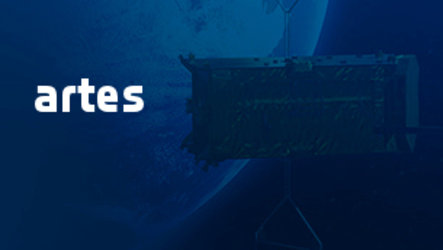Satcoms fast-tracking breast cancer detection
Satellites are linking mobile breast cancer screening units directly to hospitals so that radiologists can start their diagnoses earlier.
Every day, 180 vans equipped with X-ray machines are deployed across the UK to make it easier for women to have breast screening.
This preventive service, set up in 1987, is estimated to save 1400 lives a year as early detection increases survival rate.
Currently, medical images and patient data collected over the day are copied to hard drives and physically transported to hospital.
Satcoms bypass this process, saving time and delivery cost, reducing data losses, increasing security and enabling 10–20% more women to be screened per day.

Supported by ESA’s Integrated Applications Promotion programme, RedFoot Technologies developed Mercury as a simple one-touch service to package and transmit the complete set of clinical data either continuously or as a single batch at the end of each day.
The software gives a date and location stamp to each image. The images are then encrypted, password protected and sent to the hospital database via satellite over a private network. It is automatic and requires no staff training.
Software at the hospital sorts and delivers the images overnight so they are available to radiologists in the morning.
When 12 breast-screening vans in the UK were equipped with the system, four of them signed up to the RedFoot service even before the end of the 12-week demonstration.
Mercury uses the high-throughput Ka-band capacity on the Hylas-1 satellite of Avanti Communications.
Graham Peters, Director of Avanti Applied Technologies, commented: "Working with ESA, we developed the Hylas Applications Initiative to encourage companies such as RedFoot to develop new applications that harness the capabilities of high-speed satellite broadband."

Using an automatic self-pointing antenna on the roof of screening vans, Mercury enables the secure and auditable delivery of images to central hospitals as well as wifi, telephone and teleconferencing.
Staff in the Mercury-equipped vans are no longer isolated and have connectivity to the Internet, email and hospital systems – particularly useful in remote locations.
Secure online access to the hospital intranet means that agendas can be managed online so more patients can be seen. Appointments can be rescheduled when there is a cancellation, and walk-ups or women arriving at the mobile unit on the wrong day can then still be screened.
With online access to hospital data, vans can also minimise the amount of paper moving to and from the mobile unit.
David Osmond, Director of RedFoot Technologies, commented, “The Mercury service delivers outstanding gains in efficiency for breast screening operators and will play a vital role in the drive to screen more women in the UK.”

The UK’s health service plans to extend screening to women over 70 years of age because research shows that up to a third of all breast cancers occur in women in this group. The Mercury service can help to meet the continuously growing demand for screening.
Breast cancer comprises 22.9% of all cancers in women worldwide. The likelihood of survival and recovery varies greatly depending on when the cancer is detected. Early detection helps to define the most appropriate treatment and substantially improves the outcome.
“The Mercury project demonstrates how space can make a real impact on the daily lives of citizens especially in a domain as important as health,” says Arnaud Runge, a biomedical engineer overseeing the project for ESA.






